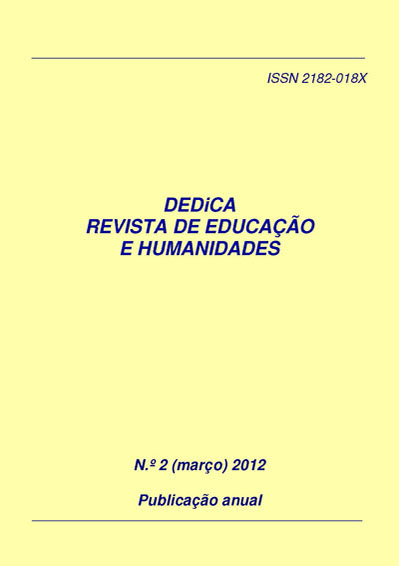Knowing them to be able to educate them: are bilingual students and non-bilingual students really different in ESO’s first year?
DOI:
https://doi.org/10.30827/dreh.v0i2.7137Keywords:
tutorship activities, bilingual education, communication and information technologies (CIT), cinema, musicAbstract
This work is based on a premise: primary and secondary education has to adapt and fit to children and adolescent realities and contexts as best as possible. Thus, the more we know students, the better education we will be able to provide in both knowledge and values fields. In order to do this, two ESO first year groups (12–13 years old) from the same high school have been studied because of their unequal academic results. One of these groups is a Spanish-English bilingual one and this is, a priori, the one and only difference between both groups. This research aims to find out other differences between both groups. Tutorship activities have been carried out in both classes. These activities have been planned according to inter-culturality and social integration by using communication and information technologies. All results have been analyzed in order to relate them to possible differences in these students.Downloads
References
Decreto 167/2003, de 17 de junio, por el que se establece la ordenación de la atención educativa a los alumnos y alumnas con necesidades educativas especiales asociadas a condiciones sociales desfavorecidas, Boletín Oficial de la Junta de Andalucía, 118, 13667-13674, de 23 de junio de 2003.
Eduteka (2002), Matriz de Valoración. Rúbricas – rubric en inglés. Disponible en: http://edtk.co/TTsuQ. Consultado en 14/05/2011.
INE (Instituto Nacional de Estadística) (2008), Encuesta de Discapacidad, Autonomía Personal y Situaciones de Dependencia, Madrid, Instituto Nacional de Estadística. Disponible en: http://www.ine.es/jaxi/menu.do?type=pcaxis&path=/t15/p418/a2008/hogares/p01/modulo1&file=pcaxis. Consultado en 222/04/2011.
Ley 27/2007, de 23 de octubre, por la que se reconocen las lenguas de signos españolas y se regulan los medios de apoyo a la comunicación oral de las personas sordas, con discapacidad auditiva y sordociegas, Boletín Oficial del Estado, 255, de 24 de octubre de 2007.
Maldonado Manso, M. P. (2011a). Eliminando barreras de comunicación: LSE en tutoría de Secundaria a través de las TIC. En 2º Congreso Internacional Uso y Buenas Prácticas con TIC. En prensa.
Maldonado Manso, M. P. (2011b). Trabajo de la Interculturalidad en tutoría de Secundaria a través de las TIC. En F. Sadio Ramos (Coord.), Tendiendo puentes hacia la Interculturalidad. Ponencias, 151-158. Coimbra: Fernando Ramos (Editor).
Orden de 28 de junio de 2011, por la que se regula la enseñanza bilingüe en los centros docentes de la Comunidad Autónoma de Andalucía, Boletín Oficial de la Junta de Andalucía, 135, 6-18, de 12 de julio de 2011. Disponible en: http://www.phpwebquest.org/. Consultado en 15/12/2010.
Plan Escuela TIC 2.0, Junta de Andalucía. Disponible en:
http://www.juntadeandalucia.es/educacion/nav/contenido.jsp?pag=/Contenidos/TemasFuerza/nuevosTF/300909_EscuelaTIC20/texto_tic. Consultado el 10/01/2010.
Real Decreto 1631/2006, de 29 de diciembre, por el que se establecen las enseñanzas mínimas correspondientes a la Educación Secundaria Obligatoria, Boletín Oficial del Estado, 5, de 5 de enero de 2007.
Resolución de 28 de julio de 2004, de la Dirección General de Participación y Solidaridad en la Educación, por la que se aprueba el Plan de Compensación Educativa de los Centros sostenidos con fondos públicos que se relacionan, Boletín Oficial de la Junta de Andalucía, 156, 17806-13674, de 10 de agosto de 2004.












